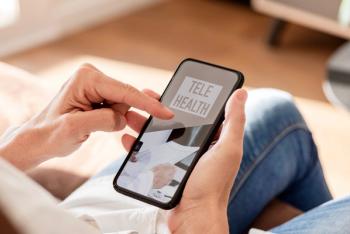
Telehealth Reimbursement Trends and Opportunities: What Physicians Need to Know
New legislation concerning telemedicine will soon provide new opportunities for physicians.
For years, telehealth reimbursement fears dogged physician practices. In fact, according to the
But for physician practices who currently use a telehealth platform – and especially those who are eager to implement telehealth -- the surge in legislation expanding telemedicine coverage is welcome news.
In 2018, the passage of the
These are just a few developments that will fuel the use of telemedicine technology in helping more patients receive care easily and quickly.
But in order to effectively move past reimbursement fears and confusion, physicians will need to acquaint themselves with Medicare’s coverage changes. Knowing what’s covered and what isn’t can help physicians and the organizations they work for navigate the best ways to incorporate telehealth into their daily workflows.
Changes to Medicare Advantage (MA)
For providers, the
Previously, MA plans tended to only offer telehealth services as a supplemental benefit. With the Final Rule, MA plans will offer additional telehealth benefits as part of patients’ regular coverage, which opens the door for providers to offer more telehealth services without fear of going broke.
As private payers nearly always follow Medicare’s precedent, it’s likely physician practices will have to worry less about whether they’ll be reimbursed for telehealth consultations with private-pay patients.
Medicare Physician Fee Schedule’s Virtual Check-in Code
The
· Brief communication through a technology-based service (HCPCS code G2012); and
· remote evaluation of recorded video and/or images submitted by an established patient (HCPCS code G2010).
This allowance expands on CMS’ existing
And the timeliness of this new provision is ideal: Chronic disease expenditures account for 90 percent of the U.S. health system’s costs,
However, it’s important to note that the virtual check-in benefit has a few restrictions in its initial rollout: Check-ins are meant to be for current patients concerning chronic care issues and for overall health management/wellness. They can only be provided to established patients who have seen the provider they are checking in with at least once in the preceding three years. Additionally, virtual check-ins may not be related to a service provided within the past seven days, nor may they lead to a service or procedure within the next 24 hours or during the soonest available appointment.
For healthcare providers already using a telehealth platform, make sure your vendor’s most current software update enables easy code mapping and documentation of the virtual experience within the EHR.
Remote Patient Monitoring
Physicians hoping to extend care management into the home will welcome CMS’ expanded coverage for remote patient monitoring (also under the 2019 Medicare Physician Fee Schedule), which includes coverage for initial set-up of a remote patient monitoring device and the patient education associated with using the device at home.
The change could also enable physician practices to get reimbursed for serving patients at the precise time they need care - and avoid hospital admissions and other adverse events.
For example,
Understanding the benefits and applications of telehealth tools can help physicians build or expand their existing telehealth programs. With emerging opportunities for telehealth reimbursement, physicians may benefit from developing patient-facing strategies and looking for new ways to incorporate telehealth into their workflows. By adopting - and adapting to - telehealth now, providers will be ahead of the game as reimbursement continues to expand for Medicare beneficiaries and commercial health plans.
Mike Baird is the President of Customer Solutions at American Well. Prior to this, Mike was co-founder and CEO of Avizia. He launched Avizia in 2013 with the goal of improving access to telehealth by eliminating barriers to adoption for health systems and delivering on the triple aim of reducing cost, expanding the reach, and improving the quality of healthcare. American Well acquired Avizia in 2018, expanding the capabilities of the American Well platform.
Newsletter
Optimize your practice with the Physicians Practice newsletter, offering management pearls, leadership tips, and business strategies tailored for practice administrators and physicians of any specialty.








